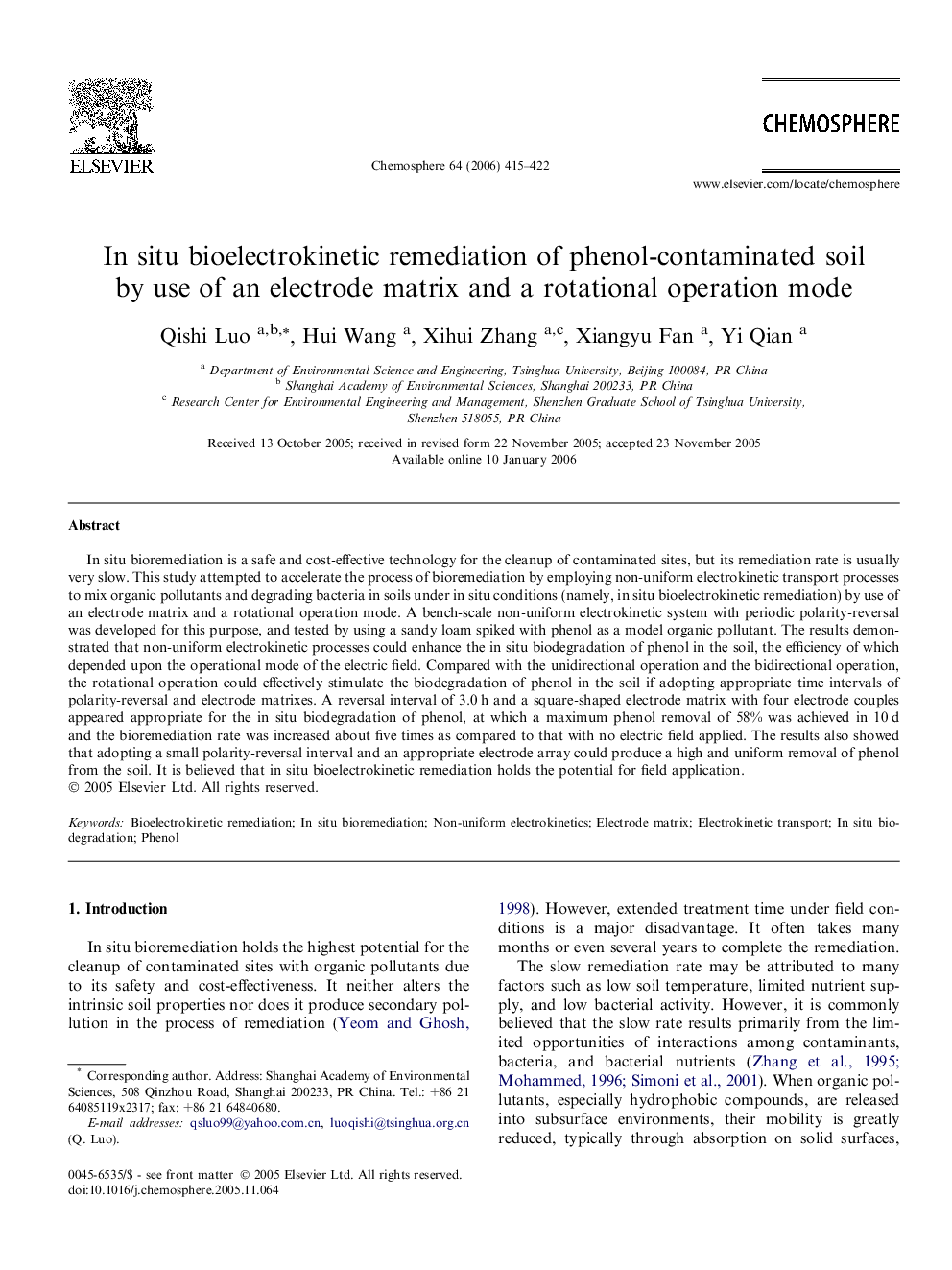| Article ID | Journal | Published Year | Pages | File Type |
|---|---|---|---|---|
| 4416358 | Chemosphere | 2006 | 8 Pages |
In situ bioremediation is a safe and cost-effective technology for the cleanup of contaminated sites, but its remediation rate is usually very slow. This study attempted to accelerate the process of bioremediation by employing non-uniform electrokinetic transport processes to mix organic pollutants and degrading bacteria in soils under in situ conditions (namely, in situ bioelectrokinetic remediation) by use of an electrode matrix and a rotational operation mode. A bench-scale non-uniform electrokinetic system with periodic polarity-reversal was developed for this purpose, and tested by using a sandy loam spiked with phenol as a model organic pollutant. The results demonstrated that non-uniform electrokinetic processes could enhance the in situ biodegradation of phenol in the soil, the efficiency of which depended upon the operational mode of the electric field. Compared with the unidirectional operation and the bidirectional operation, the rotational operation could effectively stimulate the biodegradation of phenol in the soil if adopting appropriate time intervals of polarity-reversal and electrode matrixes. A reversal interval of 3.0 h and a square-shaped electrode matrix with four electrode couples appeared appropriate for the in situ biodegradation of phenol, at which a maximum phenol removal of 58% was achieved in 10 d and the bioremediation rate was increased about five times as compared to that with no electric field applied. The results also showed that adopting a small polarity-reversal interval and an appropriate electrode array could produce a high and uniform removal of phenol from the soil. It is believed that in situ bioelectrokinetic remediation holds the potential for field application.
